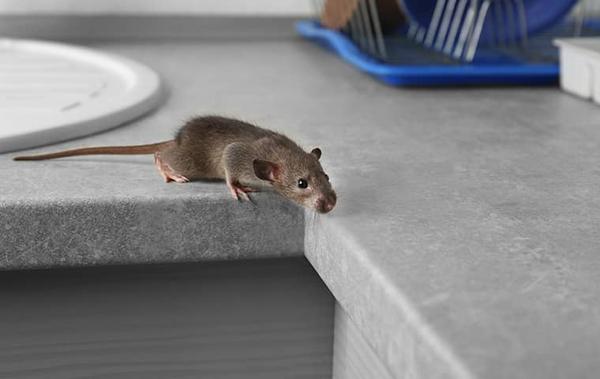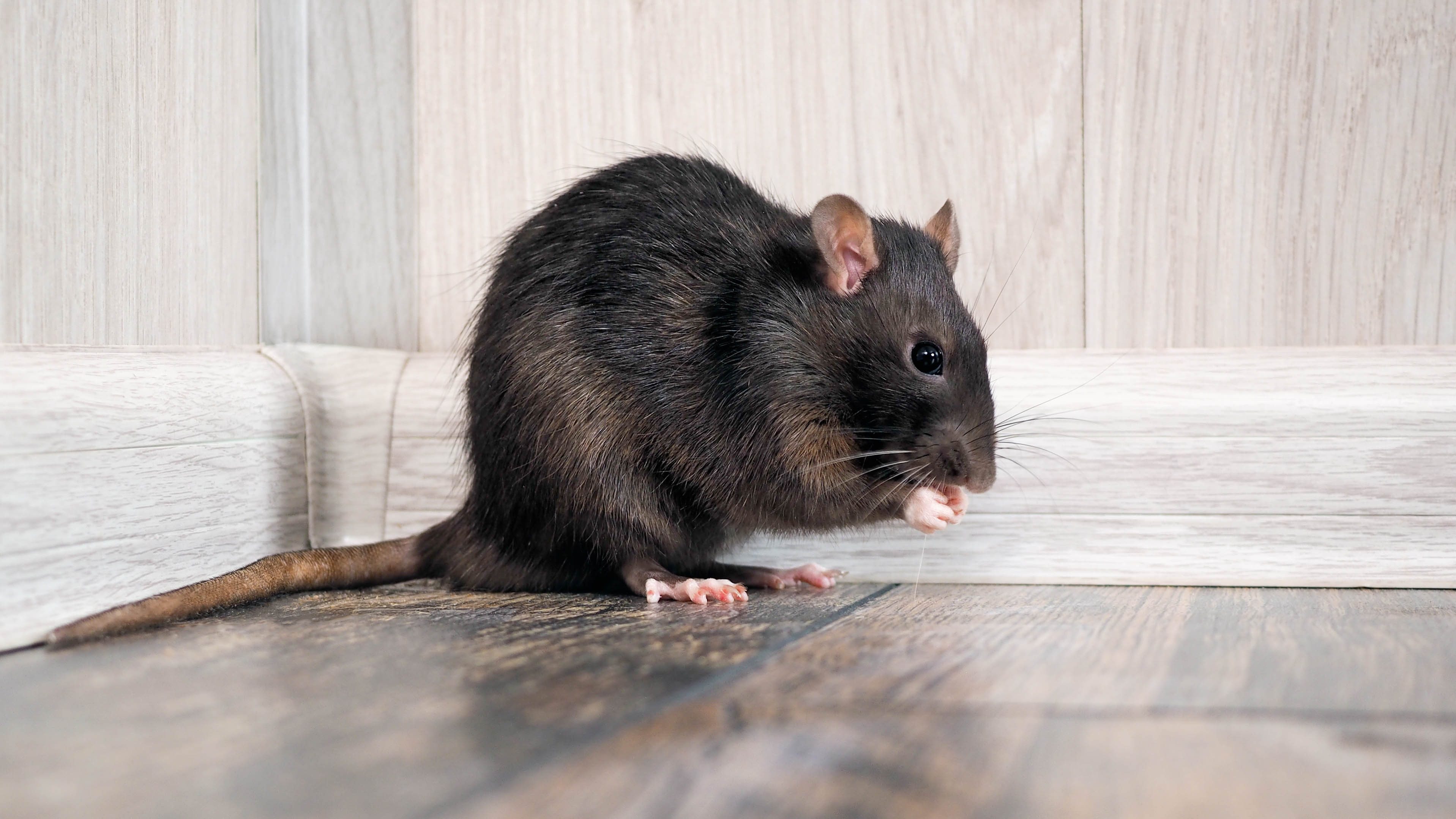Identifying the Problem: Signs of a Rat Infestation
Rat infestations can be a significant problem for homeowners, causing damage to property and posing health risks to families. To effectively address the issue, it’s essential to identify the problem early on. So, how do you know if you have a rat infestation? Look out for these common signs: droppings, gnaw marks, and strange noises. Rat droppings are typically dark brown or black and resemble rice grains. You may find them in areas where food is stored or near water sources. Gnaw marks are another indication of a rat infestation. Rats have a habit of gnawing on surfaces to wear down their teeth, which can lead to significant damage to your home’s structure. Strange noises, such as scratching, scurrying, or squeaking sounds, can also indicate the presence of rats. If you’ve noticed any of these signs, it’s crucial to take action immediately to prevent further damage and potential health risks. Early detection is key to effective rat control, and knowing how to get rid of rats is vital in preventing re-infestation. By identifying the problem early, you can take steps to eliminate the attractants and prevent further damage.
Understanding Rat Behavior: What Attracts Them to Your Home
To effectively get rid of rats, it’s essential to understand what attracts them to your home in the first place. Rats are drawn to three main things: food sources, shelter, and water. Food sources can include crumbs, spills, and unsealed food containers. Shelter can be provided by cluttered areas, stacked boxes, and hidden corners. Water sources can include pet water dishes, leaky pipes, and clogged drains. To rat-proof your home, it’s crucial to eliminate these attractants. Start by storing food in sealed containers, cleaning up crumbs and spills immediately, and keeping your home tidy. Fix any leaky pipes, clogged drains, and ensure pet water dishes are cleaned regularly. By removing these attractants, you can make your home less appealing to rats and reduce the likelihood of an infestation. Remember, understanding rat behavior is key to knowing how to get rid of rats and prevent future infestations.
How to Get Rid of Rats: Effective Trapping and Removal Methods
When it comes to getting rid of rats, trapping and removal are crucial steps in the process. There are different types of rat traps available, including humane and lethal options. Humane traps capture rats alive, while lethal traps kill them instantly. Humane traps are a good option for those who are concerned about animal welfare, but they require frequent checking and release of caught rats. Lethal traps, on the other hand, are more effective in eliminating the rat problem quickly. Regardless of the type of trap used, it’s essential to set them effectively to increase the chances of catching rats. Place traps in areas where rat activity is highest, such as near food sources and along walls. Bait traps with attractive foods like peanut butter or cheese to lure rats in. When removing caught rats, wear gloves and dispose of them in sealed bags to prevent the spread of diseases. Remember, trapping and removal are only part of the solution – to know how to get rid of rats for good, it’s essential to combine these methods with other rat control strategies, such as sealing entry points and eliminating attractants.
Natural Deterrents: Repel Rats without Harmful Chemicals
While traps and removal methods are effective in getting rid of rats, natural deterrents can be a useful addition to a comprehensive rat control strategy. These deterrents can help repel rats without exposing your family and pets to harmful chemicals. One popular natural deterrent is peppermint oil, which can be applied to areas where rats frequent. The strong smell of peppermint oil can be overwhelming for rats, causing them to avoid these areas. Citronella oil is another natural deterrent that can be used to repel rats. This oil has a strong citrus scent that can be unappealing to rats. Ultrasonic devices that emit sounds inaudible to humans but unpleasant for rats can also be an effective natural deterrent. To use these deterrents effectively, apply them consistently and in combination with other rat control methods. For example, use peppermint oil in areas where you’ve set traps to increase the chances of catching rats. Remember, natural deterrents are just one part of a comprehensive approach to getting rid of rats – to know how do u get rid of rats for good, it’s essential to combine these methods with other strategies, such as sealing entry points and eliminating attractants.
Sealing Entry Points: Preventing Re-Infestation
Once you’ve removed the rats from your home, it’s essential to prevent re-infestation by sealing all entry points. Rats can squeeze through tiny openings, so it’s crucial to identify and seal even the smallest holes and gaps around your home. Start by inspecting the exterior of your home, paying attention to areas around pipes, vents, and doors. Look for signs of rat activity, such as gnaw marks or droppings, which can indicate where rats are entering your home. Use steel wool, caulk, or expanding foam to seal any holes or gaps you find. Don’t forget to check for hidden entry points, such as behind appliances or in attics and crawlspaces. Sealing entry points is a critical step in getting rid of rats for good, as it prevents new rats from entering your home and re-infesting the area. By combining this step with other rat control methods, such as trapping and removal, natural deterrents, and cleaning and sanitizing, you can effectively know how do u get rid of rats and maintain a rat-free home over time.
Cleaning and Sanitizing: Eliminating Rat Attractants
Cleaning and sanitizing are crucial steps in getting rid of rats and preventing re-infestation. Rats are attracted to food and shelter, so it’s essential to eliminate any potential attractants in your home. Start by thoroughly cleaning and disinfecting all surfaces, including countertops, floors, and appliances. Pay particular attention to areas around sinks, stoves, and refrigerators, as these are common rat habitats. Use a mixture of soap and water to clean surfaces, and then disinfect with a solution of bleach and water. Don’t forget to clean and disinfect any rat-contaminated materials, such as bedding or clothing. It’s also important to dispose of any contaminated materials properly, by sealing them in plastic bags and throwing them away. By cleaning and sanitizing your home, you can eliminate rat attractants and reduce the likelihood of re-infestation. Remember, cleaning and sanitizing are just one part of a comprehensive approach to how do u get rid of rats – be sure to combine these efforts with other rat control methods, such as trapping and removal, natural deterrents, and sealing entry points, to maintain a rat-free home over time.
Calling in the Professionals: When to Seek Expert Help
In some cases, getting rid of rats can be a daunting task, especially when dealing with severe infestations or health risks. If you’re unsure of how to proceed or if the infestation is widespread, it may be necessary to seek professional help. Pest control services specialize in removing rats and can provide effective solutions to eliminate the problem. When deciding whether to call in the professionals, consider the following factors: the severity of the infestation, the presence of health risks, and the complexity of the problem. If you’re dealing with a large number of rats, or if you’re unsure of how to safely remove them, it’s best to seek expert help. Additionally, if you have a weakened immune system or are pregnant, it’s recommended to seek professional assistance to minimize health risks. When choosing a pest control service, look for companies that are licensed, insured, and have a proven track record of success. Be sure to ask about their methods, including the types of traps and baits used, and their approach to sealing entry points and cleaning and sanitizing. By seeking professional help when needed, you can ensure that your home is rat-free and safe for you and your family. Remember, getting rid of rats is just the first step – to maintain a rat-free home over time, it’s essential to combine professional help with long-term rat control strategies, such as regular cleaning, storing food properly, and maintaining a clean yard, to prevent re-infestation and ensure a safe and healthy living environment.
Prevention is Key: Long-Term Rat Control Strategies
Maintaining a rat-free home requires a long-term commitment to prevention and control. By implementing effective strategies, you can prevent re-infestation and ensure a safe and healthy living environment. One of the most important steps in preventing rat infestations is regular cleaning. This includes storing food in sealed containers, cleaning up crumbs and spills immediately, and disposing of trash regularly. Additionally, storing food properly and maintaining a clean yard can help eliminate attractants that draw rats to your home. Another key strategy is to maintain a clean and organized home. Cluttered areas can provide shelter for rats, so it’s essential to keep your home tidy and organized. Furthermore, consider implementing natural deterrents, such as peppermint oil or citronella, to repel rats. By combining these strategies with effective trapping and removal methods, you can maintain a rat-free home over time. Remember, how do u get rid of rats is not just about removing them, but also about preventing them from coming back. By taking a proactive approach to rat control, you can enjoy a safe and healthy living environment for years to come. By following these long-term rat control strategies, you can rest assured that your home will remain rat-free and secure.






